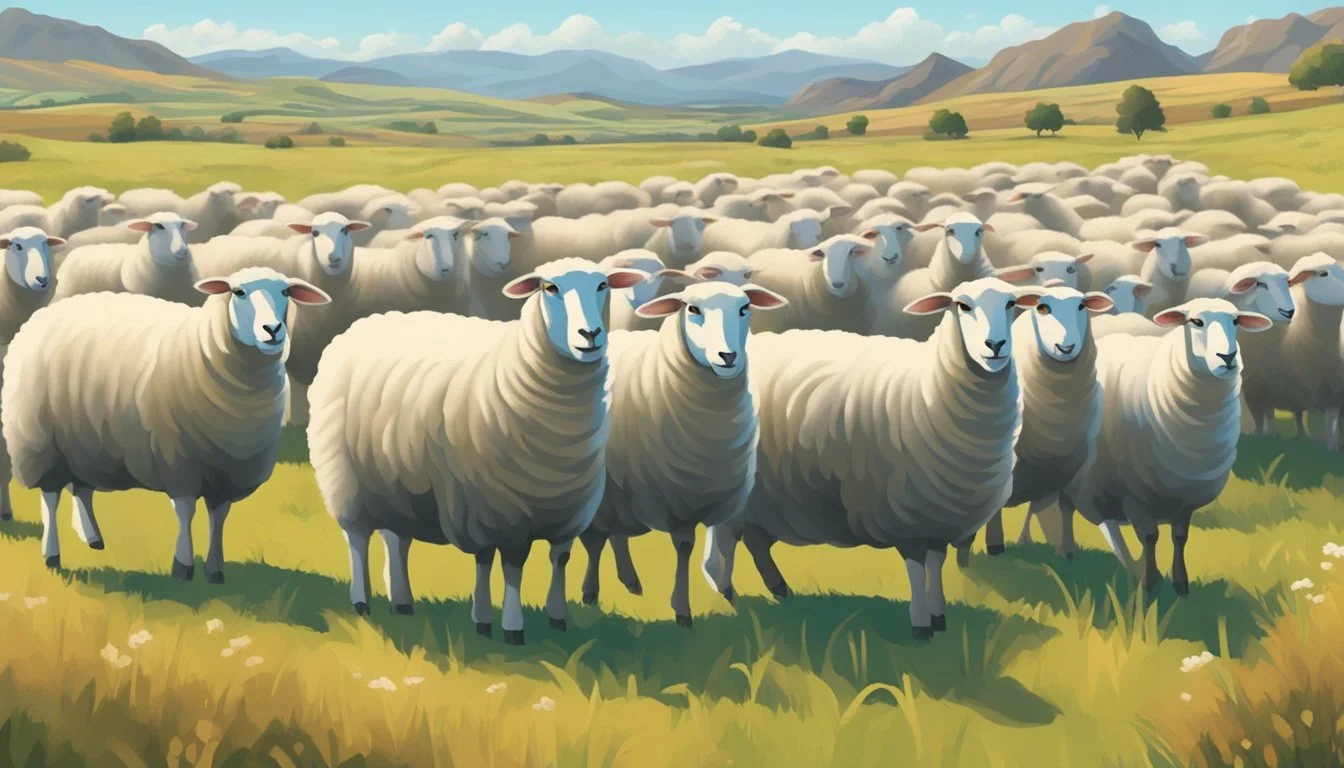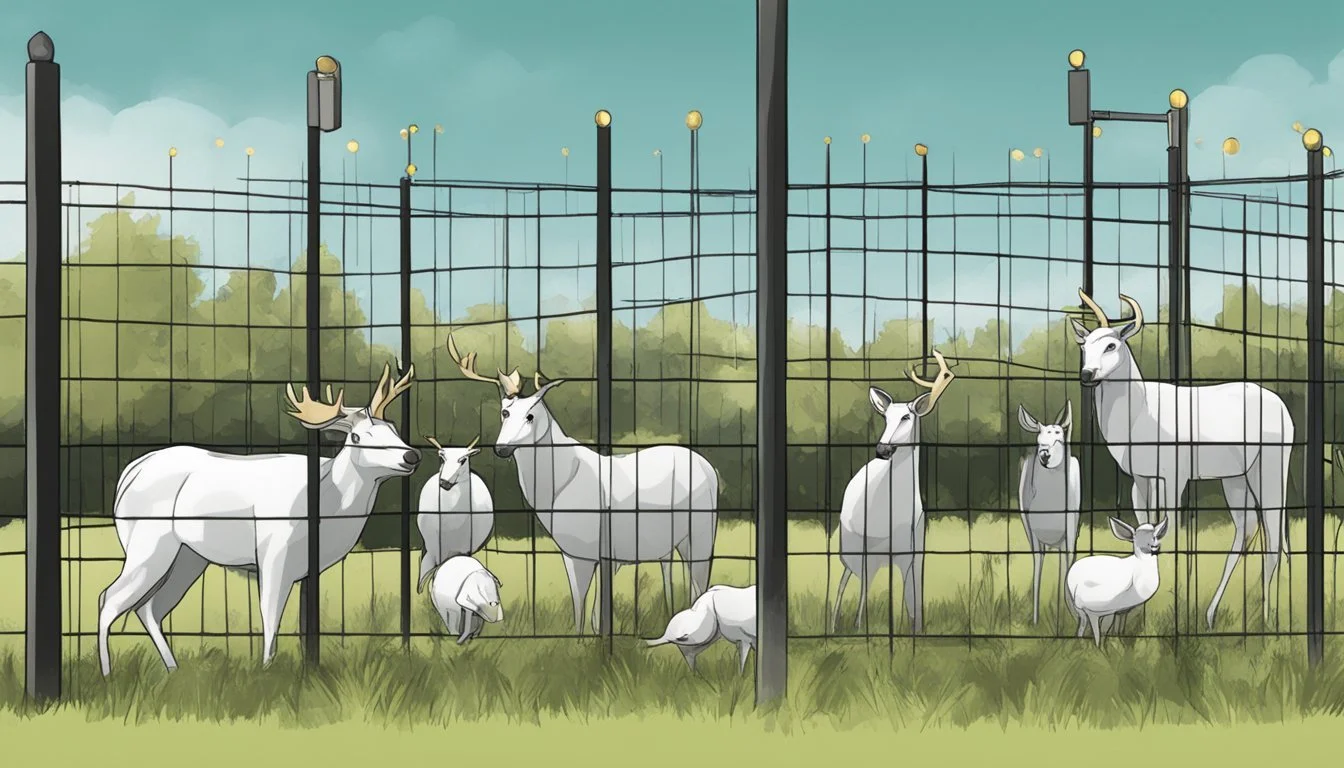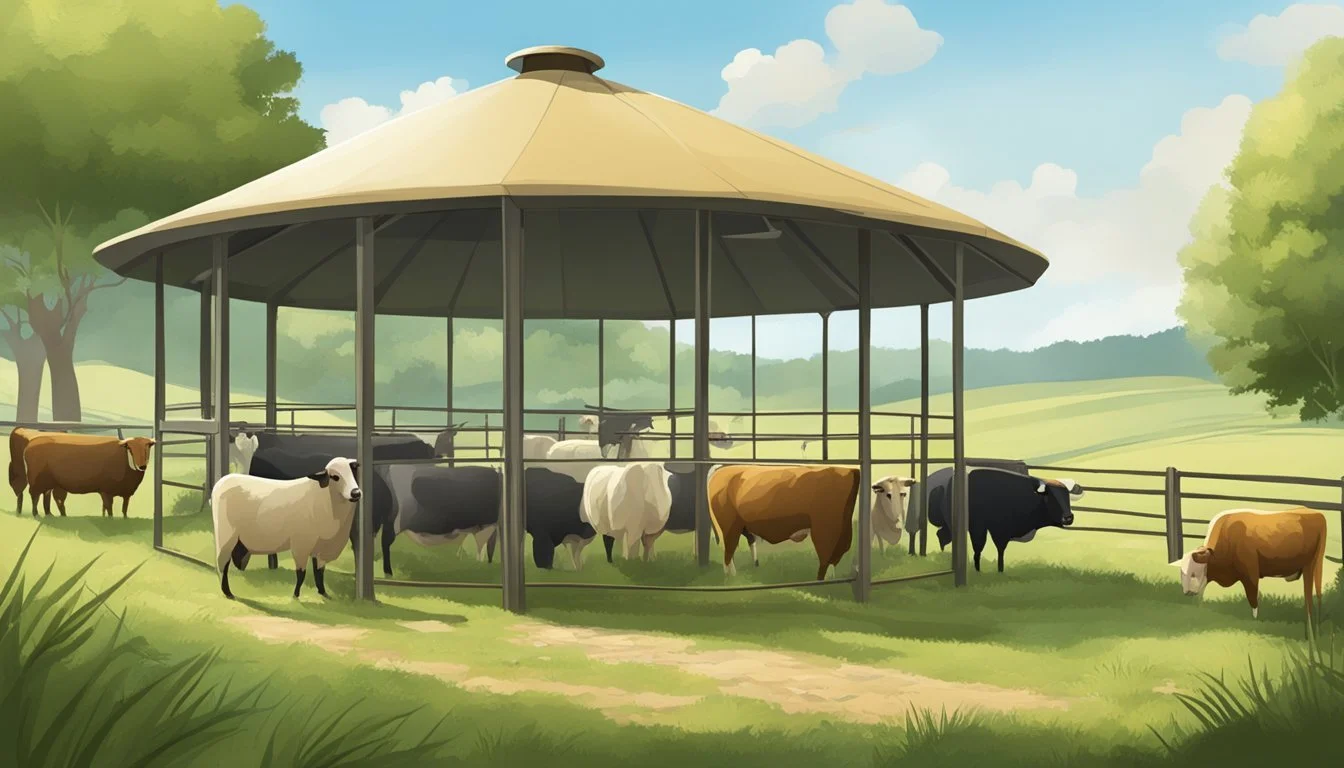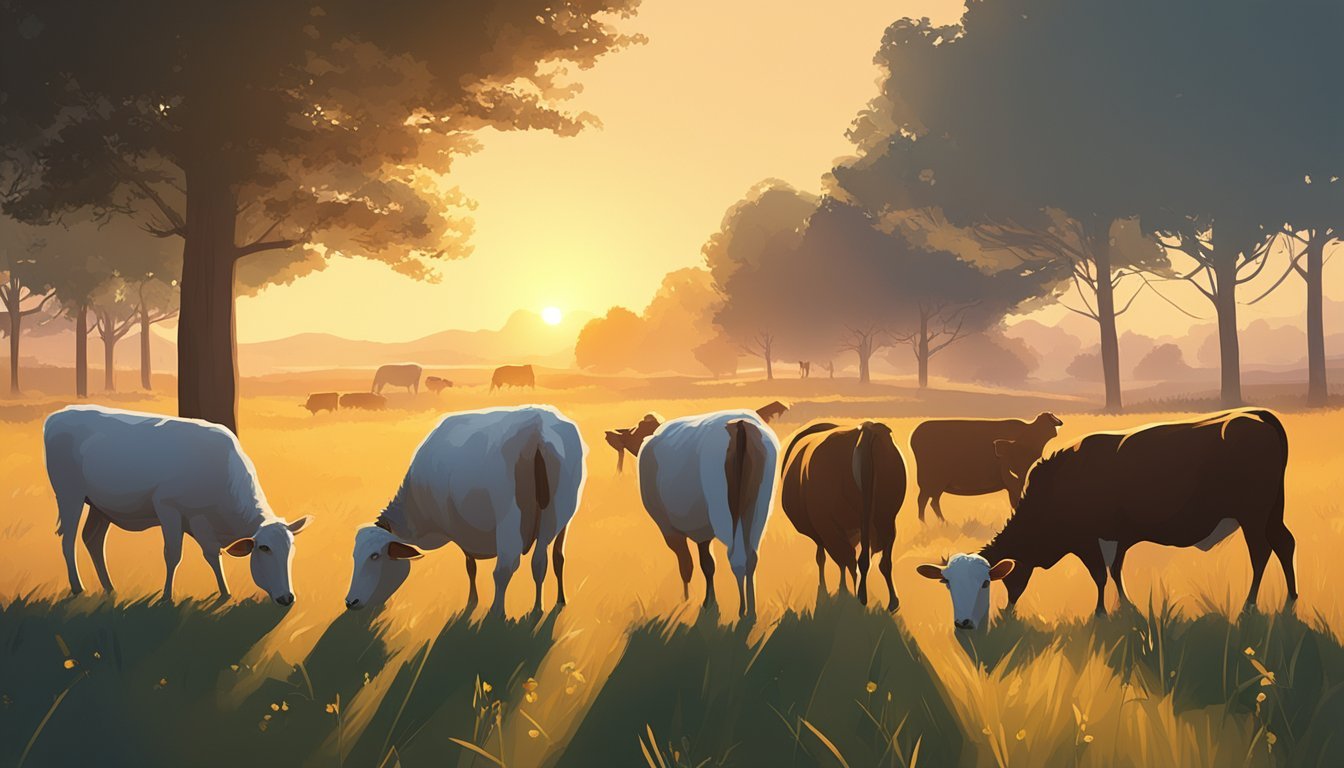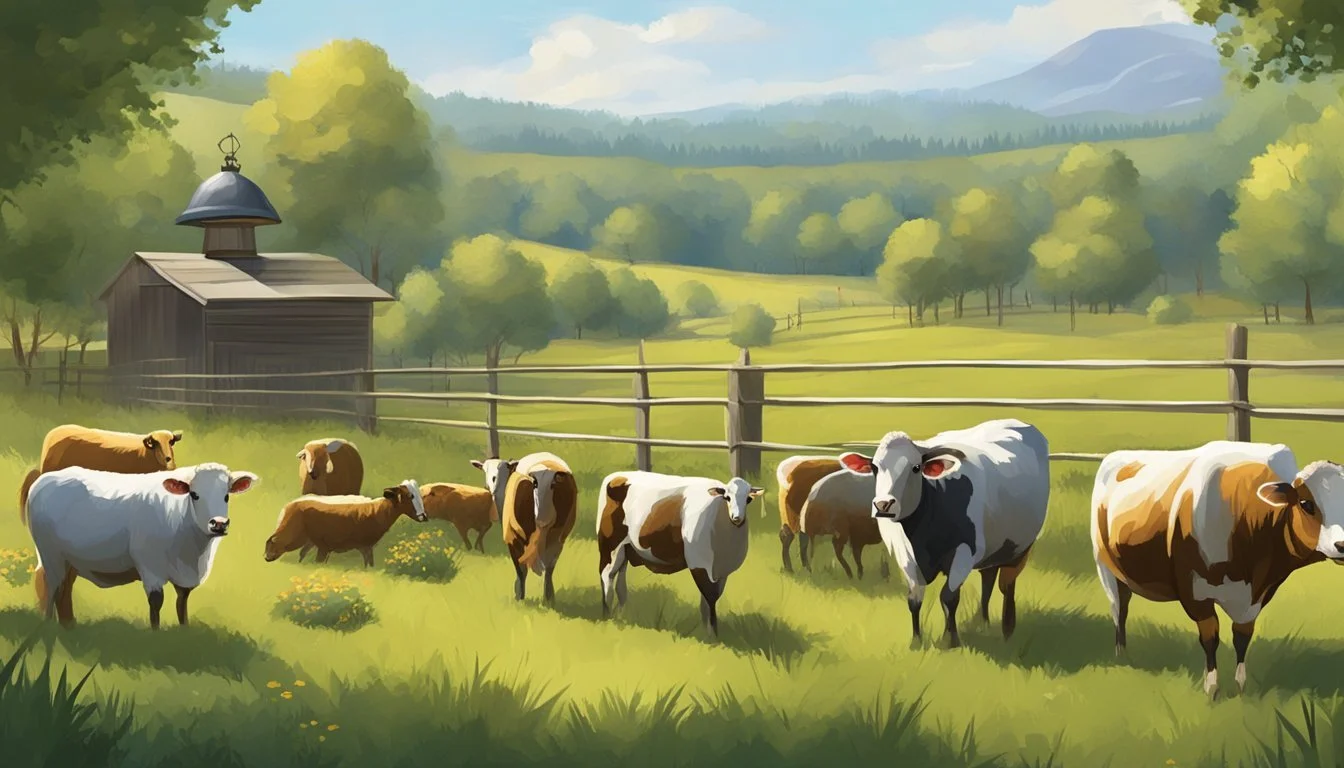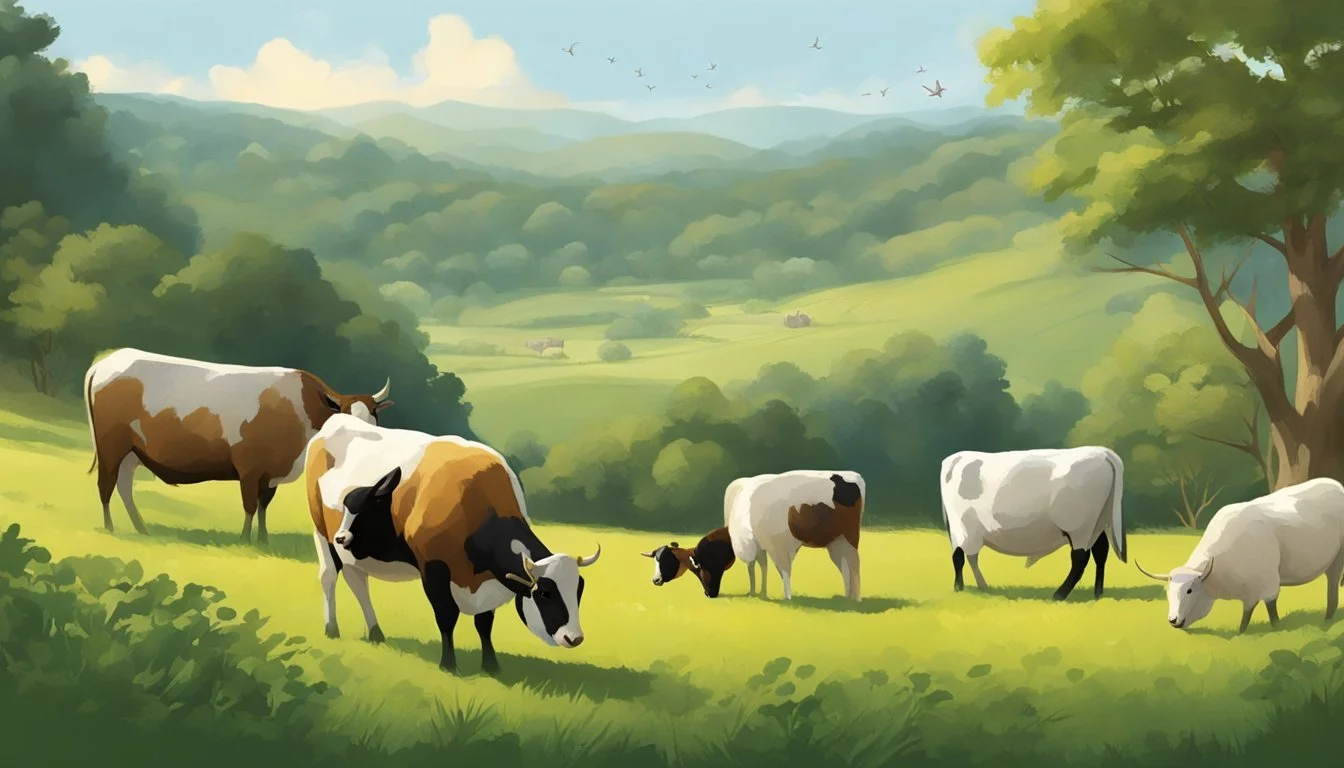Keep Your Free-Ranging Livestock Safe with a Bell Tracking System
Enhancing Farm Security
Free-ranging livestock allows animals to move, forage, and behave naturally, contributing significantly to their welfare and the sustainability of agricultural practices. However, it poses unique challenges, particularly in terms of tracking and ensuring the safety of the animals. Traditional methods of monitoring can prove labor-intensive and less effective when large areas of land are involved.
The advent of bell tracking systems offers a solution. By attaching a bell with integrated GPS technology, farmers can track their livestock in real time. This modern approach provides precise locational data, enabling farmers to quickly locate individual animals, assess their activity patterns, and respond promptly to any irregularities that might suggest distress or potential danger.
Incorporating such technology aids in prevention of theft, managing disease outbreaks by identifying abnormal behavior possibly indicative of illness, and improving overall herd management. The upfront investment in a bell tracking system can be offset by reduced labor costs, minimized losses, and improved efficiency in managing free-range livestock.
Understanding Livestock Predation
Livestock predation is an issue of significant concern for farmers and ranchers. Protecting animals from predators involves knowledge of predator types and their common behaviors.
Types of Predators
Livestock are threatened by a variety of predators, each presenting different levels of danger based on geographic location and the type of livestock. Some of the main predators include:
Mammals: Coyotes, foxes, bobcats, bears, weasels, and even domestic dogs pose a risk. They are capable of attacking animals of various sizes, from small chickens to adult sheep.
Birds of Prey: Hawks, eagles, and owls often target smaller livestock, such as chickens or ducks. These aerial predators swoop down to snatch their prey unexpectedly.
Reptiles and Rodents: Snakes might prey on eggs or newborn animals, whereas rats may attack young birds and cause damage through gnawing.
Common Predator Behaviors
Understanding predator behaviors can help in implementing effective protection strategies. Predators generally display these behaviors:
Hunting at Dusk or Dawn: Many predators like coyotes and foxes are crepuscular, being most active during twilight hours.
Stalking Prey: Predators such as bobcats and weasels are known for their stealthy approach, quietly stalking their prey before pouncing.
Snatching from the Air: Raptors like hawks and eagles have keen eyesight for spotting prey from above and then diving at high speeds to catch them.
Burrowing or Climbing: Raccoons and snakes can access livestock by climbing fences or burrowing underneath barriers.
Farmers must be vigilant, as these predators are not only adaptable but also often intelligent, learning from previous attempts and successes in both hunting and being thwarted by preventative measures.
Basics of a Bell Tracking System
Bell tracking systems combine traditional methods with modern technology to monitor livestock movements and ensure their safety. This approach typically involves attaching bells to free-ranging livestock, which when coupled with vigilant supervision, offers a simplistic yet effective means of keeping track of the animals.
Components of a Bell Tracking System
A bell tracking system comprises two main components:
The Bell: Traditionally made of metal, bells are attached to a collar that goes around the animal's neck. Each bell emits a distinct sound that can be heard over long distances.
Supervision (Human or Livestock Guardian Dogs): Shepherds or livestock guardian dogs remain alert to the bells' sounds. Any change in the pattern or absence of sound can signify an anomaly, triggering a response from the supervisor.
Benefits of Bells for Livestock
Using bells for managing and safeguarding livestock presents several benefits:
Locating Animals Easily: The sound of bells allows herders to track the movements of their livestock, especially in dense terrains where visual tracking is difficult.
Predator Alert: The constant ringing of the bells serves as a deterrent to predators and an alert system, where unusual silences can indicate possible danger.
Guardian Dog Coordination: Livestock guardian dogs are trained to respond to the bells, aiding them in protecting the flock and investigating when bell sounds cease unexpectedly.
By pairing bells with experienced supervision, farmers can create a reliable safety network for their free-ranging livestock.
Securing the Free-Range Area
When setting up a free-range area for livestock, it's critical to focus on both containment and protection. The right fencing keeps animals in designated areas and deters predators, while guard animals provide an additional layer of security.
Choosing the Right Fencing
Selecting proper fencing involves assessing the specific needs of the livestock and the potential predators in the area. For chickens and similar small livestock, welded wire fencing is a sturdy choice that prevents predators from entering the run. Chicken wire, while traditional, can be considered for enclosures due to its affordability and ease of installation. For an added measure of security, an electric fence can deter larger predators and can be combined with the welded wire for a comprehensive barrier.
Coop Security: Ensure the coop itself is fortified with durable materials, preventing entry from curious or determined predators.
Run Coverage: Covering the top of the run with bird netting or even fishing line crisscrossed can prevent aerial attacks.
Perimeter Protection: Burying the fence a foot or more below the surface discourages digging attempts by predators.
Enhancing Protection with Guard Animals
Introducing guard animals into a free-range setup can significantly enhance the security of the livestock. Livestock guardian dogs are trained to protect the flock and are known for their vigilance against predators. They bond with the livestock and are a dependable presence within the area.
Donkeys, known for their territorial behavior, can also be effective guardians, especially against canine predators. They often integrate well with a variety of livestock and can deter threats with their loud brays and even physical confrontation.
Guard Animal Benefits:
A constant protective presence
Intimidation through barking, braying, and body language
Companionship for the livestock, reducing stress
Utilization of guard animals should involve proper training and acclimatization to ensure they effectively fulfill their protective role.
Shelter and Environmental Modifications
When considering shelter and environmental modifications for free-ranging livestock, the primary focus is on ensuring a safe environment that allows for natural behaviors such as foraging and dust bathing. These modifications should provide protection while still enabling the animals to benefit from a free-range lifestyle.
Providing Adequate Cover
Shelter acts as a fundamental element in protecting livestock from adverse weather conditions. It is crucial to offer adequate cover that shields animals from extreme temperatures, winds, snow, or rain. Livestock shelters should be designed to allow sufficient space for animals to stand, turn around, and lie down without restrictions. This space is not only for comfort but also for minimizing stress, which can affect their overall health and productivity.
Shade: Shade structures are essential in warmer climates to prevent heat stress. Vegetation, such as trees or shrubs, can offer natural shade and cooling effects.
Hiding Places: Providing areas where animals can retreat when they feel threatened contributes to their sense of security. This can be achieved through strategic placement of vegetation or man-made structures.
Creating a Safe Foraging Space
Foraging is a critical aspect of a free-range system, and a safe foraging space supports natural behaviors and dietary needs. Free-range systems require a balance between freedom and safety, and certain modifications can ensure that animals can forage without facing undue risks.
Space Allocation: Space must be ample, with guidelines suggesting at least two square feet per bird in a free-range system, while pasture-raised systems may require more extensive areas.
Dust Bathing Areas: For species such as chickens, designated dust bathing areas should be included within the foraging space. These areas help with parasite control and are a natural part of avian behavior.
Gardens and Vegetation: Gardens and intermingled vegetation not only supplement the diet of the foraging animals but also enrich the foraging experience. However, it is important to ensure that the plants within reach are non-toxic and safe for consumption.
Implementing these shelter and environmental modifications creates a supportive habitat for free-ranging livestock, enhancing their welfare and productivity while maintaining a safe and secure living space.
Livestock Management and Care
Effective livestock management and care are pivotal for maintaining the health and productivity of free-ranging animals. This involves meticulous attention to feeding practices, dietary needs, and vigilant health monitoring.
Feeding and Dietary Considerations
Appropriate nutrition is crucial for the well-being of livestock. Free-ranging animals, such as poultry, often have access to a more diverse diet including eggs, insects, and herbs, which can contribute to their overall health. It's important to supplement this with a balanced feed that meets all their nutritional requirements.
Feeding Schedule: Establish a consistent feeding time to promote regular foraging behaviors.
Dietary Needs: Ensure that the diet contains a proper balance of proteins, carbohydrates, vitamins, and minerals.
Chicken tractors can be a useful tool in managing the diet of poultry. They allow for controlled access to fresh pasture where chickens can graze on natural vegetation and insects while also fertilizing the soil.
Health Monitoring and Regular Checkups
Consistent health monitoring is a key component in caring for livestock. Regular visual checkups can identify any early signs of distress or illness that may require attention.
Checkup Schedule: Implement a routine veterinary check-up plan to keep up with the health of the herd.
Illness Prevention: Be proactive with vaccinations and treatments to prevent common diseases.
Observation should involve looking for abnormal behavior or changes in appetite, which can be indicative of health issues. It's also important to ensure that animals have constant access to clean water and a stress-free environment.
Technological Advances in Livestock Protection
Advancements in technology have greatly enhanced the safety and management of free-ranging livestock. Precision tools now allow for real-time tracking and a deeper understanding of predator behavior.
Integrating GPS and Alert Systems
GPS technology has been adapted for use in livestock protection with animals fitted with collars or tags that transmit their location. The Global Positioning System (GPS), functioning through radio signals from satellites, provides precise animal locations. When integrated with alert systems, farmers receive immediate notifications if livestock move outside predefined geographical boundaries, known as geofences, or exhibit signs of distress potentially caused by predators.
GPS Collars: Devices attached to livestock that transmit location data.
Alert Systems: Notifications sent to the farmer when irregularities are detected.
Data Analysis and Predator Patterns
The collection of movement data from GPS-enabled devices allows for extensive data analysis. By examining this data, farmers can identify predator patterns, such as frequent locations of attacks or times when predators are most active. Analyzing these patterns enables farmers to implement targeted measures to protect their livestock during high-risk periods or in vulnerable areas.
Data Collection: Movement data accumulated over time.
Predator Behavior: Insights into predator habits and attack patterns.
Community and Legal Considerations
Implementing a bell tracking system for free-ranging livestock is a responsible practice that can prevent animals from becoming lost and minimize disturbances within the community. It's important for livestock owners to consider how their free-ranging animals affect their neighbors and to be aware of relevant local wildlife laws.
Neighborhood Relations
When animals roam freely, they can inadvertently enter neighboring properties, causing potential damage or nuisance. Livestock owners should proactively communicate with their neighbors to establish good relations and set clear boundaries for their animals. The use of bell tracking systems can alert neighbors to the presence of nearby livestock, allowing for quick resolution should animals stray. Additionally, keeping animals from intruding on others' property can prevent complaints and maintain a harmonious neighborhood.
Communication Strategies:
Inform neighbors about the bell tracking system
Discuss expected animal behaviors and roaming patterns
Establish a point of contact for any concerns
Understanding Local Wildlife Laws
Livestock owners must comply with the United States Department of Agriculture (USDA) regulations and local wildlife laws that govern free-ranging practices. It's crucial to:
Check USDA guidelines for free-ranging livestock.
Acquaint oneself with local regulations to ensure that the bell tracking system and the free-ranging practice itself adhere to all legal requirements.
Legal Requirements:
Obtain necessary permits or licenses
Implement humane practices as stipulated by law
Monitor and prevent potential wildlife conflicts
By understanding the impact of their livestock on the community and staying informed about the legal landscape, owners can foster a safer and more respectful environment for both their animals and their neighbors.
Benefits and Challenges of Free-Ranging Livestock
This section examines the dual nature of free-ranging livestock rearing, exploring its benefits while recognizing the inherent risks involved.
Advantages of Free-Ranging
Environment and Health: Free-ranging animals, particularly chickens, generally enjoy a healthy life due to ample space, which helps avoid the complications associated with overcrowded conditions. They exhibit natural behaviors and diets, which can lead to higher-quality, more nutritious eggs and meat. Additionally, the varied diet of insects and plants often available to free-range chickens can contribute to the nutritional content of their products.
Economic Prospects: For ranchers, the ability to raise livestock like cattle and chickens on open pastures can translate to reduced feed costs and potentially higher profit margins, assuming losses are minimized. This economic advantage is often due to the decrease in the need for expensive, processed feed and housing infrastructure.
Dealing with the Risks of Free-Ranging
Predation and Loss: Free-ranging inherently exposes livestock to the risk of predation, which can lead to the occasional loss of animals. To mitigate such risks, farmers might employ strategies like bell tracking systems to keep track of their livestock and locate them quickly if they stray or are disturbed by predators.
Environmental Impact: While free-range cattle can benefit from natural grazing, they can also contribute to soil compaction, erosion, and other environmental challenges if not managed properly. It's essential for ranchers to balance the well-being of their livestock with the sustainability of the land. This balance can be achieved through practices such as rotational grazing, which allows time for land recovery.
By understanding the benefits and challenges, farmers can strive for the best of both worlds, where free-ranging livestock are raised in a manner that maximizes their welfare and productivity while minimizing risk and environmental impact.
Conclusion
A Bell Tracking System provides a significant layer of security and management for free-ranging livestock. Such systems are designed to optimize the oversight of animals across extensive pastoral landscapes. Farmers and ranchers can rest assured that their investment in these tracking systems can lead to enhanced animal welfare and operational efficiency.
Key benefits include:
Reduced Risk of Loss: Continuous location monitoring helps prevent livestock from straying too far and becoming lost or stolen.
Improved Animal Welfare: Early detection of abnormal behaviors may indicate health issues, allowing for swift intervention.
Operational Efficiency: Data from tracking systems streamline the management process, saving time and resources.
The implementation of Bell Tracking Systems can be seen as a proactive approach to modern livestock management. They support the well-being of the livestock and provide peace of mind for the caretakers.
It's recommended that stakeholders in livestock management consider integrating such technology to augment their current practices. As technological advancements progress, these systems are likely to become even more sophisticated, offering further improvements in livestock monitoring and management.


